Description, composition and characteristics
Wallpaper is sold in rolls 0.53 – 1.06 meters wide, 10 to 25 meters long. They consist of several layers: the base can be paper, non-woven or fabric, then there is an opaque layer that masks small irregularities in the walls, and on top there is a decorative layer of vinyl (polyvinyl chloride), which can be wet cleaned.
Each roll includes a label with technical characteristics of this type of vinyl wallpaper, which contains instructions on gluing, technical characteristics, environmental friendliness of the material, vapor permeability, etc. using symbols (marking).


Technical characteristics
- Easily wet cleaned;
- Have soundproofing properties;
- Resistant to fading in the sun.

Pros and cons
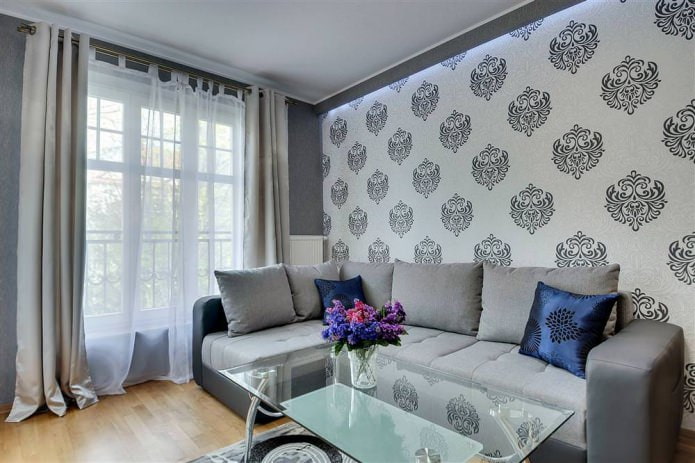
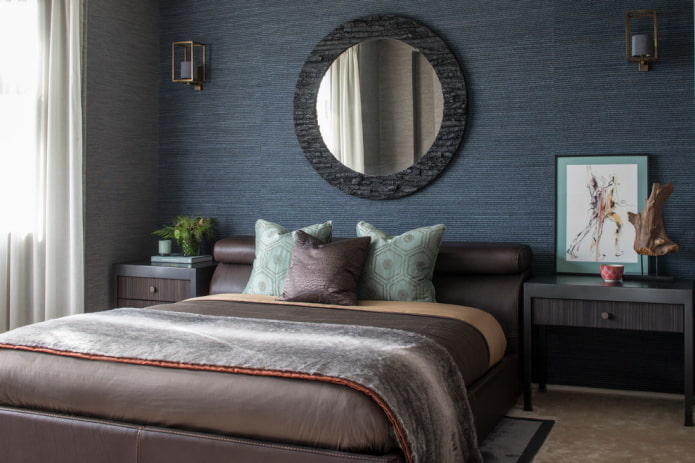
Base options and their features
As mentioned above, vinyl wallpaper consists of several layers. The base of the material can be non-woven, paper or fabric.
Non-woven base
Such a base does not absorb water at all, therefore, when gluing such canvases, glue is applied to the wall, which greatly simplifies the gluing process. Also, such vinyl canvases, due to their high density, can imitate the texture of stone, wood or any type of fabric. Non-woven base canvases are suitable for painting.
Paper base
Thinner than non-woven base and has lower wear-resistant characteristics, but such material will also cost less.
Fabric base
Rarely found – in premium wallpapers. Such canvases are resistant to deformation and hold their shape well for many years.
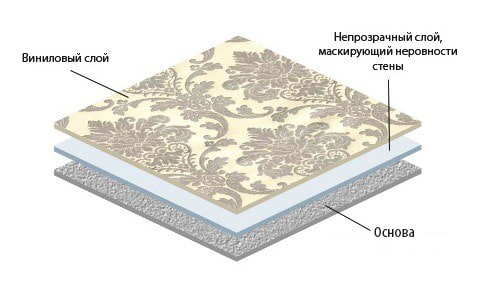

Which base is better to choose?
Each consumer must decide for himself what characteristics the wall covering in his interior should have. Below is a table with comparative characteristics of different types of vinyl wallpaper bases.
Based on the price-quality ratio, we can conclude that the best option is to choose wallpaper on a non-woven base, but the final choice is up to the buyer.
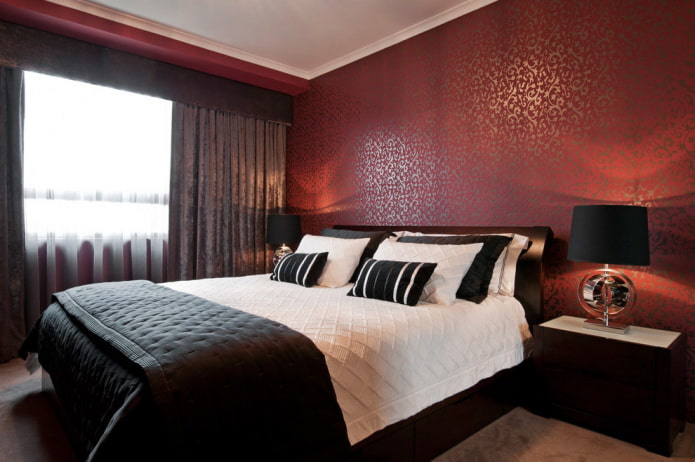
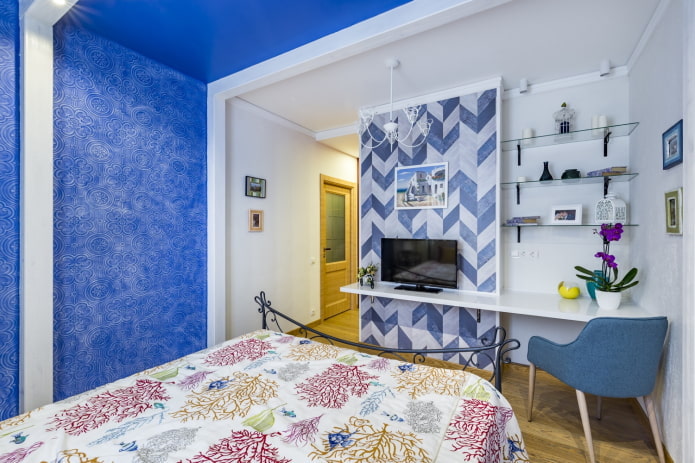
Types of vinyl wallpaper
Modern manufacturers offer a wide range of top layers, i.e. the vinyl itself.
Structural wallpaper made of foamed vinyl
They can imitate abstract patterns, the texture of fabric, untreated stone and even wood. They are intended for painting.

The photo shows light wallpaper with a relief pattern.
Hot stamping
The production process of such wallpaper is high-tech. First, foamed polyvinyl chloride is applied to the base, and then it is processed with special rollers.
Compact vinyl (also smooth or flat)
Such vinyl sheets are ideal for the kitchen, since the compact vinyl coating is not afraid even of cleaning with brushes.
Polyplen
Suitable for use not only in the kitchen, but also in the children’s room and even the bathroom. You can wash such walls an infinite number of times.
Heavy vinyl
People without experience will have a little problem gluing such vinyl sheets because of their large weight, but such sheets can be used to mask deep unevenness of the walls.
With chemical embossing (inhibition)
This material is resistant to ultraviolet light, that is, it does not fade and is not afraid of moisture.
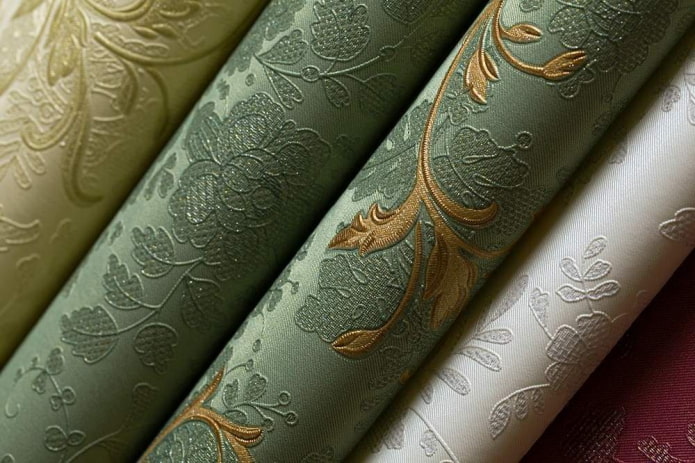
Silk-screen printing
When light hits at different angles, they imitate shiny silk fabric. Most often, this type of vinyl material is chosen for classic interiors.

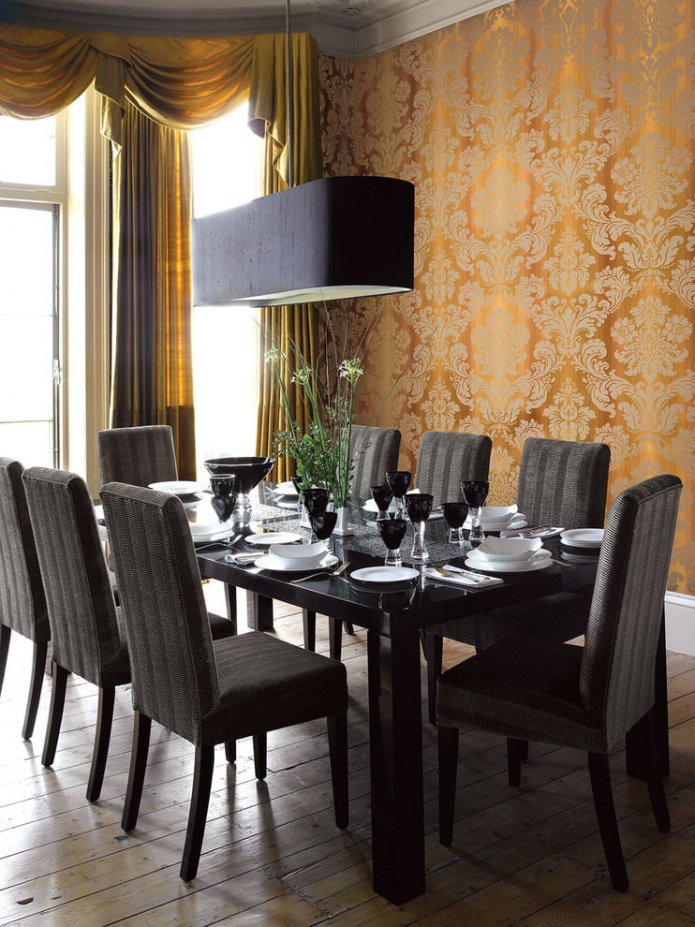
For painting
Suitable for people who like to change their surroundings often. After all, it is much easier to repaint the walls in a different color than to re-paper them.
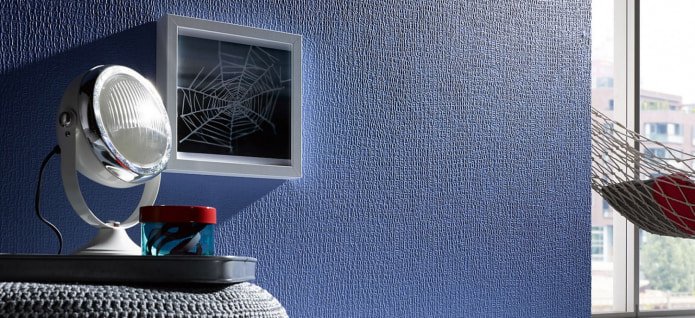
The photo shows plain wallpaper for painting.
Washable
Suitable for use in the bathroom or kitchen. They can withstand even fine abrasives, but it is better to refrain from using too caustic chemicals when washing such walls.
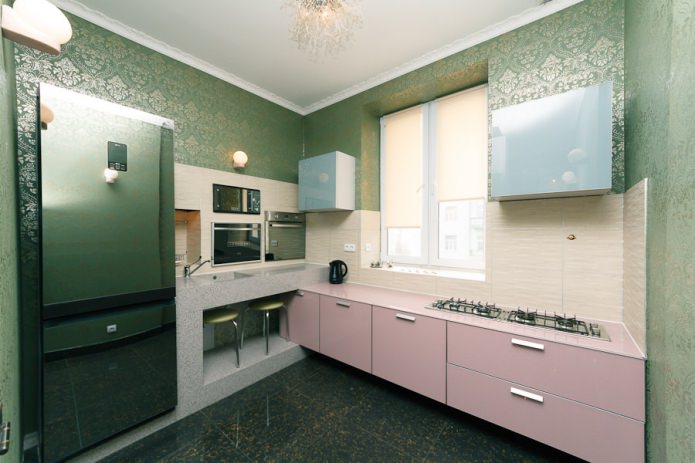
In the photo, the walls in the kitchen are decorated with meter-long wallpaper with a washable surface.
Design options and patterns
Everyone will be able to choose a pattern to their taste and color, because currently manufacturers follow fashion trends and offer a choice of vinyl canvases with a variety of ornaments, patterns, geometric patterns (geometry looks best in a large version), floral and animal prints, landmarks of world capitals, popular fairy-tale characters, and so on.



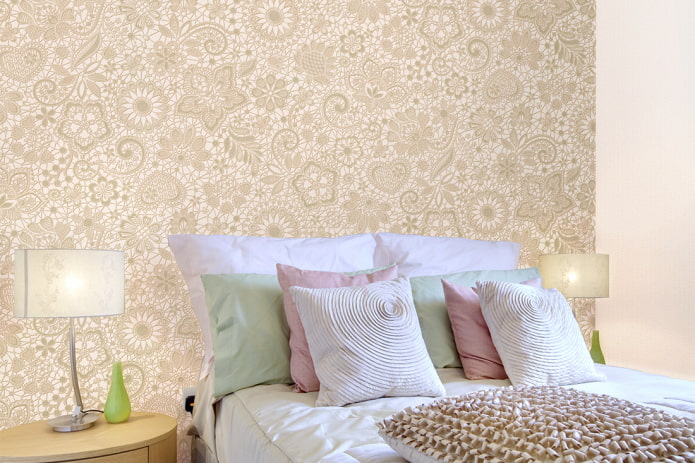
In addition, textured vinyl wallpaper imitating stone, brick, plaster, wood, snake or crocodile skin is becoming increasingly popular. With taste and experience, you can successfully combine different types of vinyl wallpaper and create a unique interior.

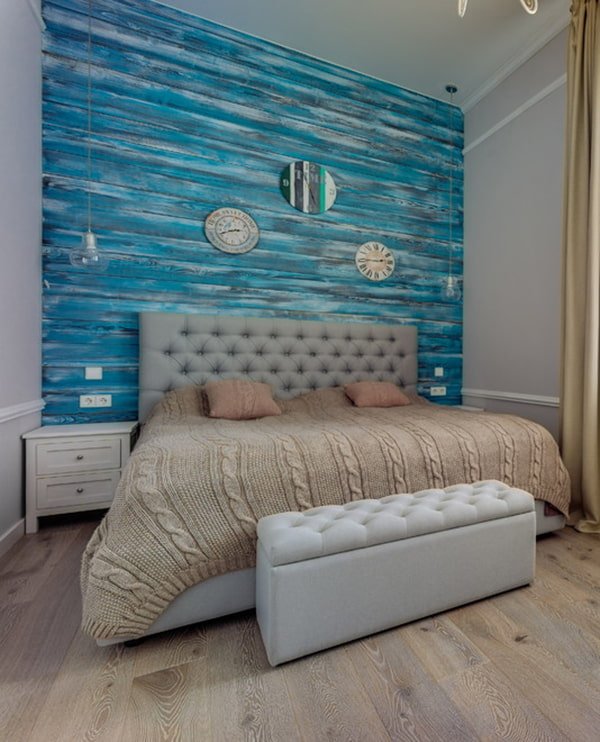

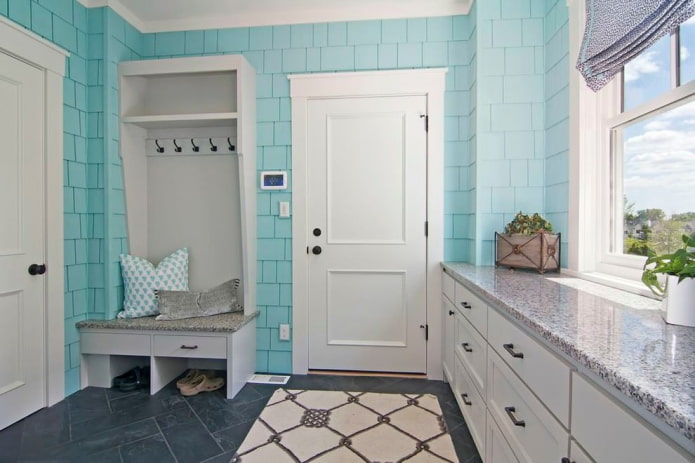
Presentation in various styles
Vinyl wallpaper is a universal modern material that will suit any interior style.
- Vinyl wallpaper imitating stonework or plaster is suitable for the increasingly popular loft style.
- In a modern or Scandinavian style, you can use imitation wood.
- For the Provence style, you can choose a pattern with a small flower.
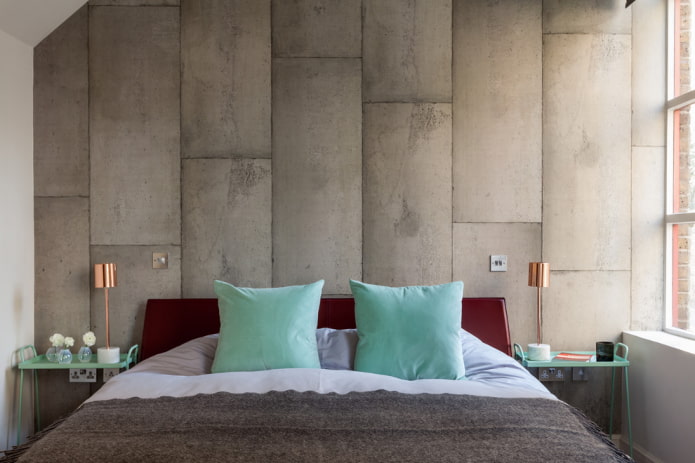
In the photo textured wallpaper under concrete.
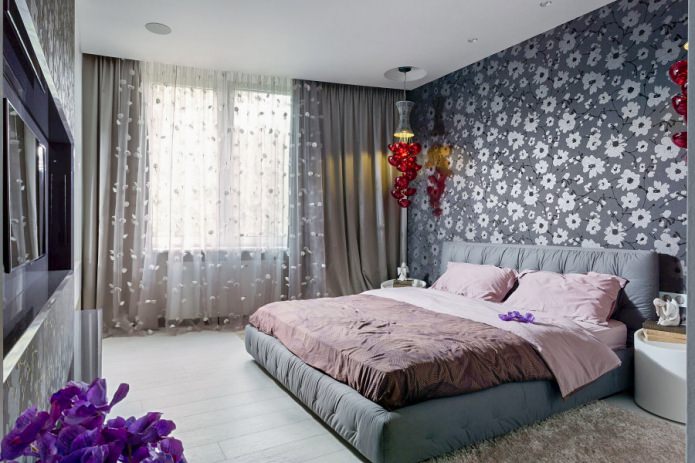
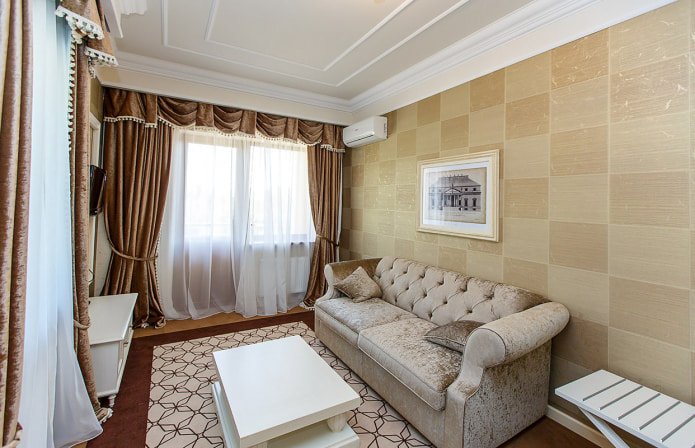
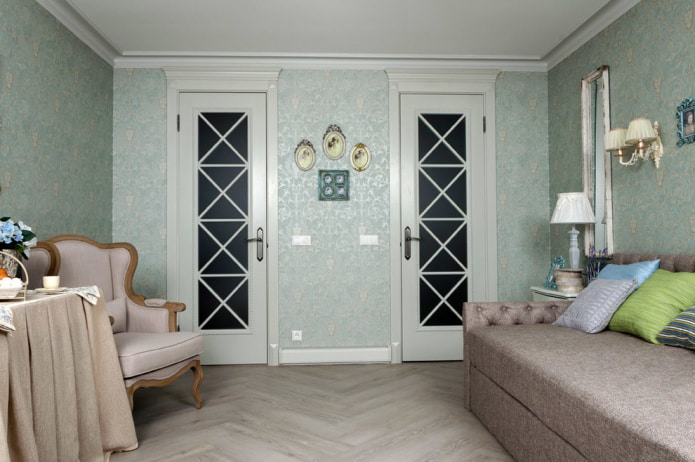
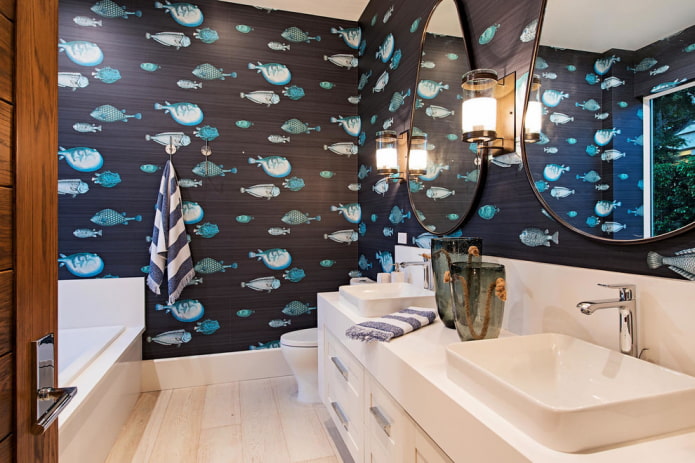
The photo shows a bathroom in a marine style. The walls are decorated with dark vinyl wallpaper with a themed print.
Color palette
Includes the entire rainbow spectrum and more. In addition to red, yellow, green, beige shades, you can find pearl, silver, gold, copper tints that change color depending on the angle of refraction of light on them.
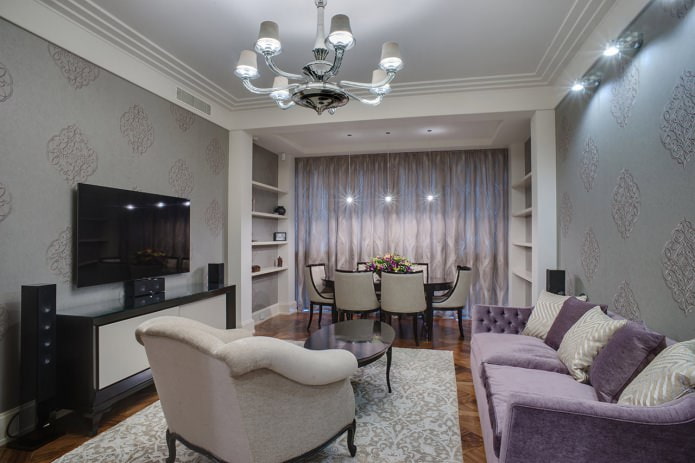
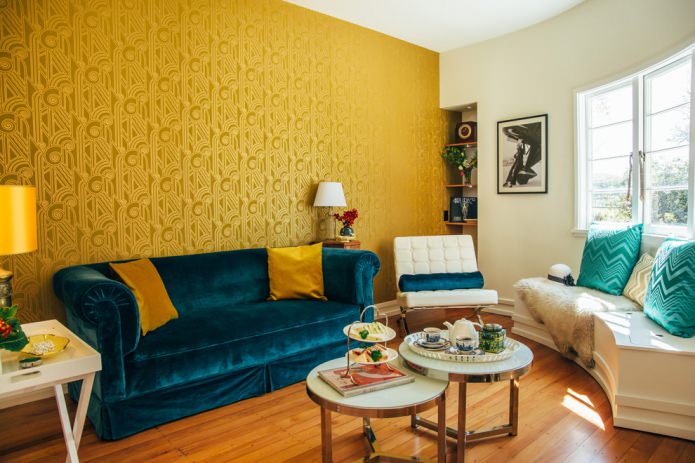
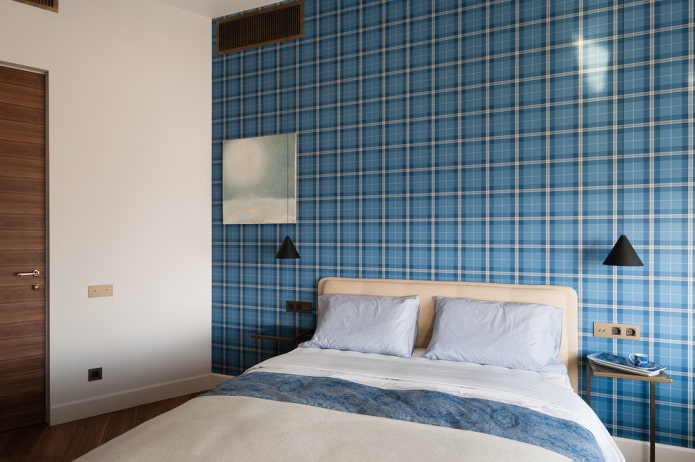

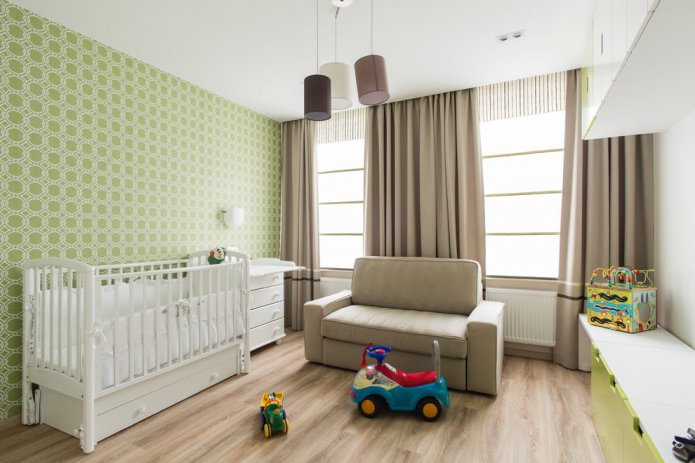

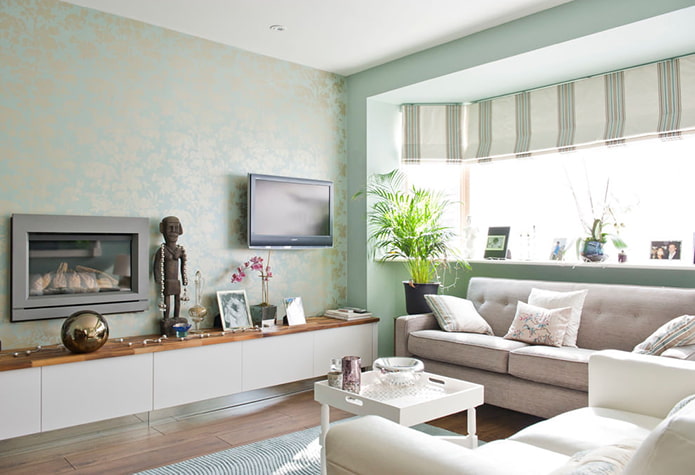
The photo shows a living room design in pastel colors with soft green wallpaper with a gold pattern.
Examples of photos in room interiors
Below is a selection of photo illustrations of vinyl wallpaper in the interior of an apartment: in the living room, kitchen, bedroom, children’s room, bathroom and hallway.


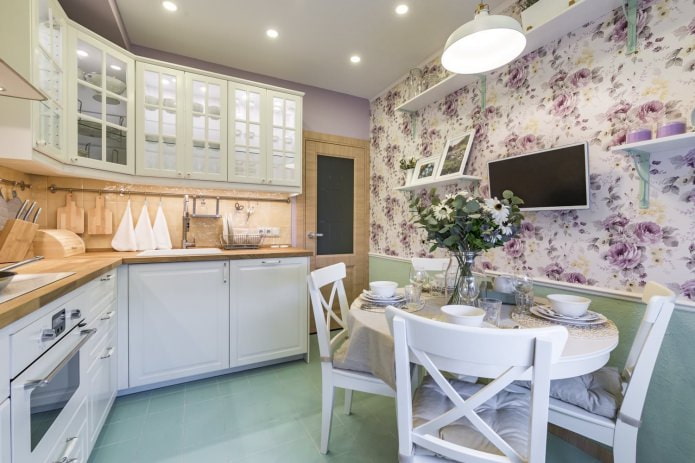



Selection rules
It is not without reason that vinyl wallpaper has become so diverse. The thing is that you should choose a certain type of wallpaper for each room:
- Washable non-woven wallpaper is suitable for the kitchen.
- Any type of wallpaper can be used for the living room.
- Smooth vinyl wallpaper, which can easily replace ceramic tiles, should be preferred for the bathroom.
- Any type of vinyl wallpaper with an anti-vandal coating can be used for the hallway.
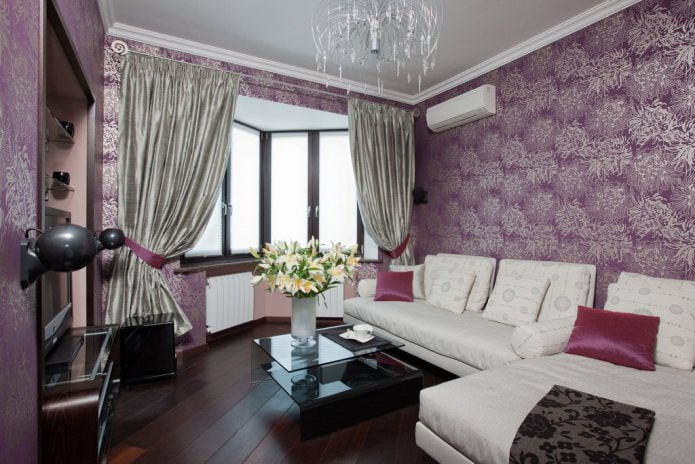


How to glue correctly?
Gluing vinyl wallpaper is quite simple. Due to their high density, they are quite difficult to tear, high-quality material does not shrink when drying and does not deform. Anyone can glue such wallpaper on their own, even without experience. You should start with preparing the walls. You need to remove the old wall covering, if there is bare plaster underneath – you need to putty the walls, then prime the surface to be pasted.
Gluing vinyl wallpaper and silk-screen printing with an overlap is impractical. You should always start pasting the room from the window. And then you should follow the instructions on the roll insert, there you can find information about whether it is necessary to apply glue to vinyl wallpaper, how long they should be soaked in glue if necessary, and so on.
How to remove vinyl wallpaper?
This process is not easy, since they consist of several layers.
Step-by-step instructions
- First, you need to tear off the top layer of vinyl with a spatula or knife. It is advisable to do this from the floor.
- Then carefully detach the top layer of wallpaper from the bottom with a pulling motion.
- If the bottom layer was paper, you need to thoroughly moisten it with water and leave it for 5 minutes, and then use a spatula to easily remove it in large layers.
- If the canvases were on a non-woven base, you do not need to remove its remains. This layer will be a good base for gluing new wallpaper.
Video guide
Painting features
Can I paint?
The answer to this question is yes, if the vinyl material is intended for this. This information can be found on the manufacturer’s insert in the roll.
How to paint correctly?
Here are some subtleties of painting vinyl wallpaper:
- Start painting the walls no less than three days after gluing the wallpaper, that is, when the glue is completely dry.
- The paint must be water-based (preferably acrylic or latex).
- When using colorant, it must be diluted immediately to the entire volume, otherwise it will not be possible to achieve an absolutely identical mixture. Wall sections painted with different mixtures will have different shades.
- You should clean the pasted canvases from dust and dirt before painting.
- You should start painting the walls from the bottom, moving upwards.




Care and cleaning rules
From time to time you need to wipe them from dust and cobwebs with a dry cloth or vacuum them. At least once a year, they need to be washed. How to do it correctly without damaging the material is discussed below:
- Use clean water or a weak soap solution for washing.
- Remove excess moisture and soap as you wash.
- Immediately after washing, wipe the walls dry with a cotton cloth.
- Wash the walls from the bottom up, and wipe from top to bottom to avoid streaks.
- Never use products containing acetone when washing.
Now reading:
- Removing minor scratches on glass: 6 simple and effective methods.
- How to put back fallen tiles in the bathroom: a proven method.
- Provence style doors: more than 40 photos and stylish interior ideas
- 13 tips for organizing pot and pan lid storage in the kitchen.
- Podium Bed: 45 Creative Ideas and Stylish Photos for Inspiration